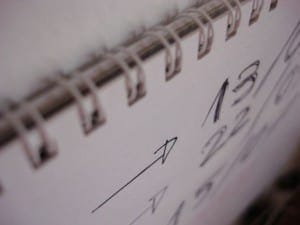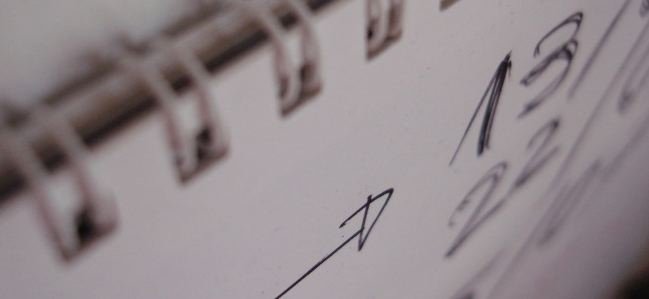5 Famous Plagiarists: Where Are They Now?
 In the past month, two well-known journalists have become the subject of plagiarism and fabrication scandals.
In the past month, two well-known journalists have become the subject of plagiarism and fabrication scandals.
The first was Jonah Lehrer, a science and technology reporter that wrote for The New Yorker and was also the author of three books. He was first accused of self plagiarism but was eventually accused of falsifying quotes and traditional plagiarism as well. He resigned his position at The New Yorker and is under investigation by his publisher though Wired has said they plan to keep him on.
The second was Freed Zakaria, a CNN correspondent and editor at Time magazine, he was accused of plagiarizing part of one of his columns from an earlier work in The New Yorker and apologized almost immediately. However, he was suspended by both organizations pending an investigation but was reinstated a week later after the investigation failed to find any new issues.
These cases highlight just how public and how devastating even smaller cases of plagiarism can be to people in news, creative or academic fields. But for all of the talk about plagiarism being a “death penalty” crime, does it actually turn out that way ordinarily? It certainly doesn’t appear to have been for Lehrer and Zakaria, but what about other recent cases?
I decided to take a look at five of the more recent plagiarism scandals and find out what those plagiarists are doing today.
1. Jayson Blair
![]() In 2003 Jayson Blair was a rising star in journalsim and a reporter for the New York Times. However, in 2003 an editor at the San Antonio Express-News had noticed similarities between a column by Blair and an earlier work by one of their reporters Macarena Hernandez. The Times launched an investigation into Blair and discovered that at least 36 of his 73 articles contained instances of plagiarism, fabrication or other unethical behavior.
In 2003 Jayson Blair was a rising star in journalsim and a reporter for the New York Times. However, in 2003 an editor at the San Antonio Express-News had noticed similarities between a column by Blair and an earlier work by one of their reporters Macarena Hernandez. The Times launched an investigation into Blair and discovered that at least 36 of his 73 articles contained instances of plagiarism, fabrication or other unethical behavior.
Blair resigned from the New York Times and, for a time, his name became synonymous with the word “plagiarism”.
Where is He Now? In 2007 Jayson Blair took a job as a life coach, where he reportedly earns $130 per hour giving advice to his clients. More recently however, the Atlantic Theater company produced a play called CQ/CX, which purports to cover the Jayson Blair scandal from the inside at The Times.
But while Jayson Blair hasn’t taken a new job as a journalist since the scandal, he was called upon by several reporters to offer his advice and opinions during the Jonah Lehrer case.
Lesson: It’s pretty clear that Jayson Blair does not have many, if any, open doors for him in journalism. However, he seems to have parlayed his experience into a new career that he seems to be excelling at.
2. Kaavya Viswanathan
 In 2006, Kaavya Viswanathan was a Harvard student on top of the world. She had just signed a book deal rumored to be worth $1 million and her first work “How Opal Mehta Got Kissed, Got Wild, and Got a Life” had just climbed to 32 on the New York Times bestseller list. There was even talk of movie deals and a second book due soon. It seemed she was destined to be a top author in the “chick lit” genre she was targeting.
In 2006, Kaavya Viswanathan was a Harvard student on top of the world. She had just signed a book deal rumored to be worth $1 million and her first work “How Opal Mehta Got Kissed, Got Wild, and Got a Life” had just climbed to 32 on the New York Times bestseller list. There was even talk of movie deals and a second book due soon. It seemed she was destined to be a top author in the “chick lit” genre she was targeting.
However, allegations began to surface that Viswanathan had copied portions of her book from other authors in the field. Though her publisher at first stood by her, they eventually pulled the book and revoked the deal, which was later reported to be worth less than half a million.
Where is She Now? Viswanathan, despite initial calls to be disciplined or expelled from Harvard, graduated and in 2008 was accepted at Georgetown Law. In 2010 she started an internship at the New York office of Sullivan & Cromwell, one of the most presitigous law firms in the nation.
Unfortunately though, Viswanathan’s success was beset by personal tragedy as, in 2011, her parents were killed in an Ohio plane crash.
Lessons: Viswanathan was, with time, able to land on her feet and, like Blair, parlay her experiences into a new career. However, it is worth noting that Georgetown University is also where serial fabricator Stephen Glass received his law degree, hinting that it may be a place for disgraced authors to seek acceptance into the legal profession. Though, in Glass’ case, the process has been less-than-smooth.
3. Lloyd Brown
 In 2004 Lloyd Brown was the editorial page editor for the Florida Times-Union. However, allegations began to surface that Brown had used plagiarized material in some of his editorials prompting the paper to assemble a task force to investigate. After the investigation, Brown resigned from the paper after it was revealed that there were three incidents of plagiarism and “many other instances of lack of complete attribution” dating back to 1996.
In 2004 Lloyd Brown was the editorial page editor for the Florida Times-Union. However, allegations began to surface that Brown had used plagiarized material in some of his editorials prompting the paper to assemble a task force to investigate. After the investigation, Brown resigned from the paper after it was revealed that there were three incidents of plagiarism and “many other instances of lack of complete attribution” dating back to 1996.
Where is He Now? Brown found himself in the spotlight again almost immediately after then Florida governor Jeb Bush hired Brown as a staff writer less than one month after he had resigned. Brown ended up resigning from that new position as well, saying he did not wish to become a distraction for the governor. As recently as 2010, he has continued to write for various publications though mostly smaller publications and politically-oriented newsletters.
Lessons: Brown has been able to continue working at least somewhat in the journalism world though it’s clear his career has never recovered. However, the controversy following his quick hiring by the governor shows just how difficult it can be for plagiarists to find work after a scandal.
4. Nada Behziz
 In 2005, Nada Behziz was a reporter at The Bakersfield Californian focusing on health issues. However, she was fired in October of that year when her editors discovered that an article she had written about teenage smoking plagiarized a quotation from a 1995 story in the San Francisco Examiner. A further investigation found evidence of plagirism in 29 other pieces she had written, representing more than one third of her work.
In 2005, Nada Behziz was a reporter at The Bakersfield Californian focusing on health issues. However, she was fired in October of that year when her editors discovered that an article she had written about teenage smoking plagiarized a quotation from a 1995 story in the San Francisco Examiner. A further investigation found evidence of plagirism in 29 other pieces she had written, representing more than one third of her work.
In addition to the plagiarism, the review found at least one case of potential fabrication and further investigation by other newspapers found still more stories plagiarized.
Where is She Now? Immediately after she was fired, Behziz was far from contrite. When asked about additional investigation into her work, Behziz responded calling it a “witch hunt” and saying that the news organizations looking into her should be looking at “true wrongdoers”.
However, since then Behziz has fallen off the radar. There have been no media mentions of her since 2005 and it does not appear she has worked in journalism since, at least not under that name. Though someone with that name appears to be living in California, even that has been difficult to confirm.
Lesson: Behziz’s scandal happened in 2005, well after the rise of the Internet and though it was fairly big news at the time, it seems she has managed to more or less disappear. As such, it shows that, with time, the scars of plagiarism do fade.
5. Maureen Dowd
In 2009, Maureen Dowd was a New York Times columnist was accused of plagiarizing a a post on the Talking Points Memo site. Though the actual amount of content involved was very small, Dowd, 20 years earlier, broke the story of then Presidential candidate Joe Biden’s alleged plagiarism, ending his run before the primaries.
Dowd’s political position and the aggressiveness she pursued Biden over plagiarism made her a target and brought the scandal to national prominence but her claim that she heard the line from a friend and got it there, with no explanation as to how it was copied near-verbatim, didn’t help placate those who felt she should be disciplined.
Where is She Now? Despite the controversy, Dowd’s career never took a serious hit. She continues to write for The New York Times today and, though that column was appended with a correction and she was scolded publicly by her editor, no other action was taken against her by her employer.
Lesson: Isolated and relatively minor incidents of plagiarism are usually not career-killers, especially for established journalists. This is also what seems to have happened with Fareed Zakaria.
Bottom Line
In the end, what happened to the plagiarists involved in many of the biggest and best-known scandals of recent times depends on a variety of factors. This includes the severity of the plagiarism, the status of the reporter and how public the scandal was.
The “celebrity” plagiarists, for the most part, seemed to land on their feet. The ones that weren’t as well known seemed to, with time, at least be able to disappear or continue on. Those with minor allegations, such as Dowd, seem to hit a speed bump but are usually able to move on.
So while I doubt any of these individuals are happy that they faced the scandals they did and some were forced out of their professions, in the long term most seemed to recover from it fairly well and find new lives.
So while plagiarism can be a serious offense and it can kill a career, it doesn’t seem to be the end of everything, even for the best-known plagiarists in the world.
Want to Reuse or Republish this Content?
If you want to feature this article in your site, classroom or elsewhere, just let us know! We usually grant permission within 24 hours.
